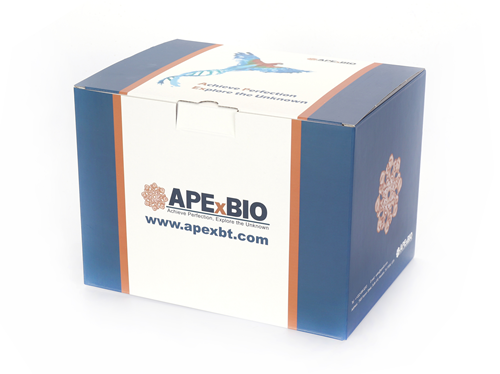Recombinant Human BMP-2
Bone Morphogenetic Protein 2 is one of the BMPs, some of which belong to the TGF-beta superfamily (BMP2-7). There are more than thirteen BMPs have been discovered nowadays and they are involved in inducing cartilage and bone formation. BMP-2 is expressed in a variety of tissues including lung, spleen, brain, liver, prostate ovary and small intestine. It is a potent osteoinductive cytokine and plays its role in association with osteoconductive carriers such as collagen and synthetic hydroxyapatite. As it shown to stimulate the production of bone, the recombinant human BMP-2 is available for orthopaedic usage and dentisty. The functional form of BMP-2 is a disulflde-linked homodimer and about 26 kDa The precursor of BMP-2 is 259 a.a., containing the 23 a.a. N-terminal signal sequence which will be cleaved by a furin-type protease to form the mature peptide.
Reference:
1. Chung YI, Ahn KM, Jeon SH, et al. 2007. J Control Release, 121: 91-9.
2. Yamaji K, Kawanami M, Matsumoto A, et al. 2007. Dent Mater J, 26: 481-6.
3. Allen RT, Lee YP, Stimson E, et al. 2007. Spine (Phila Pa 1976), 32: 2996-3006.
4. Shen B, Wei A, Tao H, et al. 2009. Tissue Eng Part A, 15: 1311-20.
5. Seib FP, Lanfer B, Bornhauser M, et al. 2010. J Tissue Eng Regen Med, 4: 324-7.
6. Itoh T, Ando M, Tsukamasa Y, et al. 2012. FEBS Lett, 586: 1693-701.
|
Gene ID |
650 |
|
Accession # |
P12643 |
|
Alternate Names |
BMP-2A |
|
Source |
Escherichia coli. |
|
M.Wt |
Approximately 26.0 kDa, a homodimeric protein consisting of two 115 amino acid non-glycosylated polypeptide chains. |
|
AA Sequence |
MQAKHKQRKR LKSSCKRHPL YVDFSDVGWN DWIVAPPGYH AFYCHGECPF PLADHLNSTN HAIVQTLVNS VNSKIPKACC VPTELSAISM LYLDENEKVV LKNYQDMVVE GCGCR |
|
Appearance |
Sterile Filtered White lyophilized (freeze-dried) powder. |
|
Stability & Storage |
Use a manual defrost freezer and avoid repeated freeze-thaw cycles. - 12 months from date of receipt, -20 to -70 °C as supplied. - 1 month, 2 to 8 °C under sterile conditions after reconstitution. - 3 months, -20 to -70 °C under sterile conditions after reconstitution. |
|
Formulation |
Lyophilized from a 0.2 µm filtered concentrated solution containing 10 mM sodium citrate pH 3.5. |
|
Reconstitution |
We recommend that this vial be briefly centrifuged prior to opening to bring the contents to the bottom. Reconstitute in sterile distilled H2O to a concentration of 0.1-1.0 mg/mL. Stock solutions should be apportioned into working aliquots and stored at ≤ -20 °C. Further dilutions should be made in appropriate buffered solutions. Do not reconstitute in PBS or cell culture media. |
|
Biological Activity |
Fully biologically active when compared to standard. The ED50 as determined by inducing alkaline phosphatase production of murine ATDC5 cells is less than 200 ng/ml, corresponding to a specific activity of > 5.0 × 103 IU/mg. |
|
Shipping Condition |
Gel pack. |
|
Handling |
Centrifuge the vial prior to opening. |
|
Usage |
For Research Use Only! Not to be used in humans. |
Quality Control & MSDS
- View current batch:
-
Purity > 95 % by SDS-PAGE and HPLC analyses.
- Datasheet
Endotoxin: Less than 1 EU/µg of rHuBMP-2 as determined by LAL method.








